Instruction
The flop shot that kept Jordan Spieth from flopping at The Masters
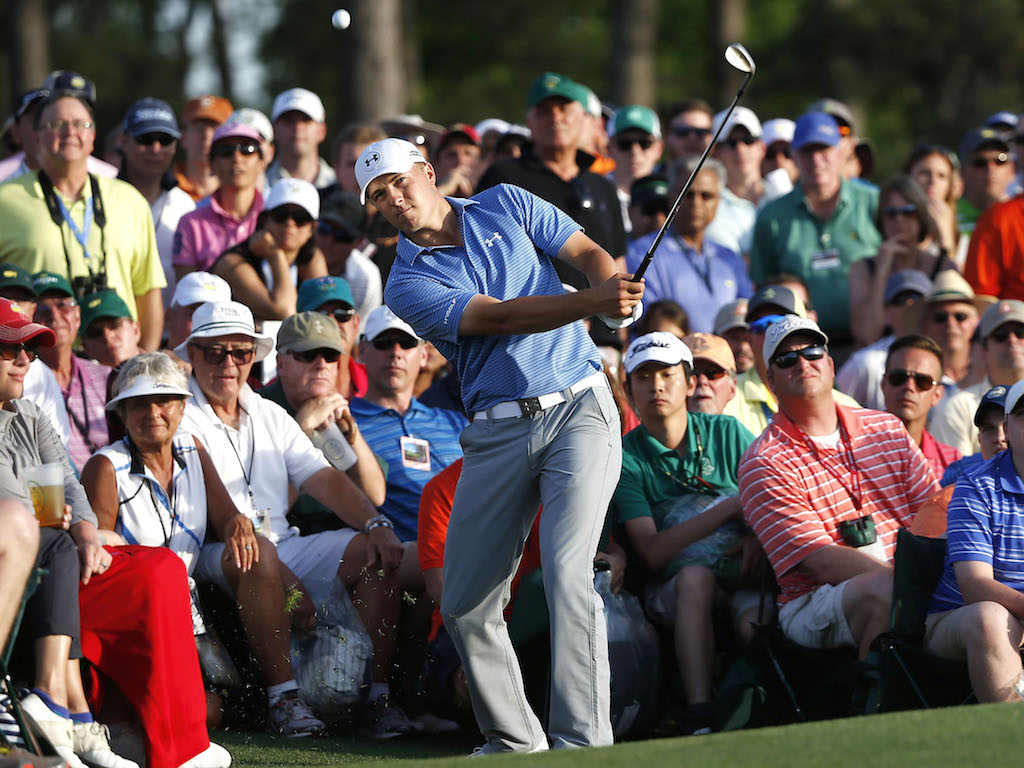
Late in the day on Saturday at The Masters, it was looking like a coronation was taking place. Jordan Spieth had a crazy big lead through 52 holes and looked virtually bullet proof. He was Superman!
Then things got interesting in a hurry.
Spieth made a mess of No. 17 from just off the green, and from the middle of the fairway on 18, he hit it wide right into the patrons above the bunker. With the pin position on the back right of the green, he was terribly short sided. You could hear the ghost of Bob Rosburg saying, “He’s got not shot.” This is where Jordan proceeded to hit the shot, specifically hit the flop, that saved The Masters for him. It was a momentum-shifting shot of immeasurable proportion that took him into Sunday on a high note. Instead of finishing double bogey-bogey (or worse), he made the par that Greg Norman needed in ’86 from the same spot.
I can coach a player to play eight different flop shots. I have them all named: Flip Flop, Freddie Flop, Cut Flop, Full Flop, Closed Flop, Max Flop, Set Flop and Safety Flop. The one that Spieth played is the most common one used on the PGA Tour under pressure, because it’s the least risky of all the shots. It’s called “The Safety Flop.”
So how did he pull it off?
The other day I set up the same shot as Jordan: short sided, above the green, skirting a bunker, landing on a down slope. The missing elements are millions of people watching at home, a full gallery on No. 18 and the pressure of The Masters. Otherwise, it was very similar!
The Setup
- Club selected was my 60-degree wedge.
- Ball forward in my stance (opposite the logo on my shirt).
- Face open 45 degrees (or more if the situation dictates it).
- Hands low and not pushed forward.
- Pressure balanced 50/50 on my feet with my feet close together.
- Left foot flared to support rotation of the chest forward through impact to the finish.
- Arms completely relaxed with zero tension.
- Slight tilt to the shoulder line, with the front shoulder up and the right hip inward a little.
The execution of the shot requires two pieces: One is speed, and two is the swing.
First is the assessment of the speed needed to make the ball go forward, but also to make it go up. When golfers hit a flop shot most of the time, they only account for the speed necessary to make the ball go forward horizontally like any normal shot. They end up hitting a high, soft shot that goes about half the required distance. But since this shot has two factors, horizontal and vertical, you have to account for the energy needed to meet both requirements. So you need to power the swing to propel the ball upward and forward, and this requires you to swing harder than if you were just going forward and low with the shot. A key is to keep the speed of the chest moving with the fast arms. There is no lower body in this shot. It is all upper body speed from the chest and arms.
The bigger the difference between the two lines, the more you have to add energy to account for the “up” in the shot.
The swing is part two. I call it the “Safety Flop” because the setup is very vanilla without any special tricks. It’s the easiest of the flop swings to execute, and I can teach someone the “Safety Flop” simply in one session.
The Swing
- The backswing is very vertical, with the right arm hinging immediately and the swing moving in a “V” shape. You are setting the distance of the shot with the size of the backswing.
- On the downswing, with the vertical angle of attack, the open club face slides under the ball lifting it high and straight. Some of the errors I see in executing this shot include taking the club back too low and also too much around. Both of these will make you hit the ball to the right, sometimes drastically.
- Another problem is that most players generally stop their follow through too soon. Keep it going! If you were going to throw a ball underhanded, high and soft, you would finish the toss with your hand high. The lower body is not an active participant in this shot. So keep it quietly responding to the movements up top.
The other part of the swing that is necessary — and a learned trick — is the follow through. I want you to learn it by reverse engineering it. Work it back to impact from the finish to feel it correctly.
Check out this picture of my finish.
Notice how the face is open and looking at me, and the shaft is leaned toward my head. This is a huge key in making the ball go straight up and land very softly, so practice posing in this position. From here, return the club head back to the ball like you are swinging backward. Feel all the movements that this entails. Now from the ball, go forward to this position again without taking a backswing. Keep repeating this until you look like the picture every time. You should feel the club face rotating open as the shaft feels like it is going to hit you in the forehead.
If you can learn the more vertical backswing the safety flop requires, and also learn to put the club in the right position on the finish, you can execute this shot successfully. All that is left to do is judge the power needed to hit the ball up and forward. Just pick the correct backswing length to do that.
- LIKE33
- LEGIT9
- WOW3
- LOL0
- IDHT0
- FLOP5
- OB2
- SHANK10
Instruction
The Wedge Guy: The easiest-to-learn golf basic

My golf learning began with this simple fact – if you don’t have a fundamentally sound hold on the golf club, it is practically impossible for your body to execute a fundamentally sound golf swing. I’m still a big believer that the golf swing is much easier to execute if you begin with the proper hold on the club.
As you might imagine, I come into contact with hundreds of golfers of all skill levels. And it is very rare to see a good player with a bad hold on the golf club. There are some exceptions, for sure, but they are very few and very far between, and they typically have beat so many balls with their poor grip that they’ve found a way to work around it.
The reality of biophysics is that the body moves only in certain ways – and the particulars of the way you hold the golf club can totally prevent a sound swing motion that allows the club to release properly through the impact zone. The wonderful thing is that anyone can learn how to put a fundamentally sound hold on the golf club, and you can practice it anywhere your hands are not otherwise engaged, like watching TV or just sitting and relaxing.
Whether you prefer an overlap, interlock or full-finger (not baseball!) grip on the club, the same fundamentals apply. Here are the major grip faults I see most often, in the order of the frequency:
Mis-aligned hands
By this I mean that the palms of the two hands are not parallel to each other. Too many golfers have a weak left hand and strong right, or vice versa. The easiest way to learn how to hold the club with your palms aligned properly is to grip a plain wooden ruler or yardstick. It forces the hands to align properly and shows you how that feels. If you grip and re-grip a yardstick several times, then grip a club, you’ll see that the learning curve is almost immediate.
The position of the grip in the upper/left hand
I also observe many golfers who have the butt of the grip too far into the heel pad of the upper hand (the left hand for right-handed players). It’s amazing how much easier it is to release the club through the ball if even 1/4-1/2″ of the butt is beyond the left heel pad. Try this yourself to see what I mean. Swing the club freely with just your left hand and notice the difference in its release from when you hold it at the end of the grip, versus gripping down even a half inch.
To help you really understand how this works, go to the range and hit shots with your five-iron gripped down a full inch to make the club the same length as your seven-iron. You will probably see an amazing shot shape difference, and likely not see as much distance loss as you would expect.
Too much lower (right) hand on the club
It seems like almost all golfers of 8-10 handicap or higher have the club too far into the palm of the lower hand, because that feels “good” if you are trying to control the path of the clubhead to the ball. But the golf swing is not an effort to hit at the ball – it is a swing of the club. The proper hold on the club has the grip underneath the pad at the base of the fingers. This will likely feel “weak” to you — like you cannot control the club like that. EXACTLY. You should not be trying to control the club with your lower/master hand.
Gripping too tightly
Nearly all golfers hold the club too tightly, which tenses up the forearms and prevents a proper release of the club through impact. In order for the club to move back and through properly, you must feel that the club is controlled by the last three fingers of the upper hand, and the middle two fingers of the lower hand. If you engage your thumbs and forefingers in “holding” the club, the result will almost always be a grip that is too tight. Try this for yourself. Hold the club in your upper hand only, and squeeze firmly with just the last three fingers, with the forefinger and thumb off the club entirely. You have good control, but your forearms are not tense. Then begin to squeeze down with your thumb and forefinger and observe the tensing of the entire forearm. This is the way we are made, so the key to preventing tenseness in the arms is to hold the club very lightly with the “pinchers” — the thumbs and forefingers.
So, those are what I believe are the four fundamentals of a good grip. Anyone can learn them in their home or office very quickly. There is no easier way to improve your ball striking consistency and add distance than giving more attention to the way you hold the golf club.
More from the Wedge Guy
- The Wedge Guy: Golf mastery begins with your wedge game
- The Wedge Guy: Why golf is 20 times harder than brain surgery
- The Wedge Guy: Musings on the golf ball rollback
- LIKE85
- LEGIT13
- WOW6
- LOL1
- IDHT0
- FLOP4
- OB1
- SHANK8
Instruction
Clement: Stop ripping off your swing with this drill!

Not the dreaded headcover under the armpit drill! As if your body is defective and can’t function by itself! Have you seen how incredible the human machine is with all the incredible feats of agility all kinds of athletes are accomplishing? You think your body is so defective (the good Lord is laughing his head off at you) that it needs a headcover tucked under the armpit so you can swing like T-Rex?
- LIKE0
- LEGIT2
- WOW2
- LOL0
- IDHT0
- FLOP0
- OB0
- SHANK2
Instruction
How a towel can fix your golf swing

This is a classic drill that has been used for decades. However, the world of marketed training aids has grown so much during that time that this simple practice has been virtually forgotten. Because why teach people how to play golf using everyday items when you can create and sell a product that reinforces the same thing? Nevertheless, I am here to give you helpful advice without running to the nearest Edwin Watts or adding something to your Amazon cart.
For the “scoring clubs,” having a solid connection between the arms and body during the swing, especially through impact, is paramount to creating long-lasting consistency. And keeping that connection throughout the swing helps rotate the shoulders more to generate more power to help you hit it farther. So, how does this drill work, and what will your game benefit from it? Well, let’s get into it.
Setup
You can use this for basic chip shots up to complete swings. I use this with every club in my bag, up to a 9 or 8-iron. It’s natural to create incrementally more separation between the arms and body as you progress up the set. So doing this with a high iron or a wood is not recommended.
While you set up to hit a ball, simply tuck the towel underneath both armpits. The length of the towel will determine how tight it will be across your chest but don’t make it so loose that it gets in the way of your vision. After both sides are tucked, make some focused swings, keeping both arms firmly connected to the body during the backswing and follow through. (Note: It’s normal to lose connection on your lead arm during your finishing pose.) When you’re ready, put a ball in the way of those swings and get to work.

Get a Better Shoulder Turn
Many of us struggle to have proper shoulder rotation in our golf swing, especially during long layoffs. Making a swing that is all arms and no shoulders is a surefire way to have less control with wedges and less distance with full swings. Notice how I can get in a similar-looking position in both 60° wedge photos. However, one is weak and uncontrollable, while the other is strong and connected. One allows me to use my larger muscles to create my swing, and one doesn’t. The follow-through is another critical point where having a good connection, as well as solid shoulder rotation, is a must. This drill is great for those who tend to have a “chicken wing” form in their lead arm, which happens when it becomes separated from the body through impact.
In full swings, getting your shoulders to rotate in your golf swing is a great way to reinforce proper weight distribution. If your swing is all arms, it’s much harder to get your weight to naturally shift to the inside part of your trail foot in the backswing. Sure, you could make the mistake of “sliding” to get weight on your back foot, but that doesn’t fix the issue. You must turn into your trial leg to generate power. Additionally, look at the difference in separation between my hands and my head in the 8-iron examples. The green picture has more separation and has my hands lower. This will help me lessen my angle of attack and make it easier to hit the inside part of the golf ball, rather than the over-the-top move that the other picture produces.


Stay Better Connected in the Backswing
When you don’t keep everything in your upper body working as one, getting to a good spot at the top of your swing is very hard to do. It would take impeccable timing along with great hand-eye coordination to hit quality shots with any sort of regularity if the arms are working separately from the body.
Notice in the red pictures of both my 60-degree wedge and 8-iron how high my hands are and the fact you can clearly see my shoulder through the gap in my arms. That has happened because the right arm, just above my elbow, has become totally disconnected from my body. That separation causes me to lift my hands as well as lose some of the extension in my left arm. This has been corrected in the green pictures by using this drill to reinforce that connection. It will also make you focus on keeping the lead arm close to your body as well. Because the moment either one loses that relationship, the towel falls.


Conclusion
I have been diligent this year in finding a few drills that target some of the issues that plague my golf game; either by simply forgetting fundamental things or by coming to terms with the faults that have bitten me my whole career. I have found that having a few drills to fall back on to reinforce certain feelings helps me find my game a little easier, and the “towel drill” is most definitely one of them.
- LIKE12
- LEGIT2
- WOW2
- LOL0
- IDHT0
- FLOP2
- OB0
- SHANK8
-

 19th Hole6 days ago
19th Hole6 days agoDave Portnoy places monstrous outright bet for the 2024 Masters
-

 19th Hole2 weeks ago
19th Hole2 weeks agoThings got heated at the Houston Open between Tony Finau and Alejandro Tosti. Here’s why
-

 19th Hole1 week ago
19th Hole1 week agoTiger Woods arrives at 2024 Masters equipped with a putter that may surprise you
-

 19th Hole2 weeks ago
19th Hole2 weeks agoReport: Tiger Woods has ‘eliminated sex’ in preparation for the 2024 Masters
-

 19th Hole2 days ago
19th Hole2 days agoTwo star names reportedly blanked Jon Rahm all week at the Masters
-

 19th Hole1 day ago
19th Hole1 day agoNeal Shipley presser ends in awkward fashion after reporter claims Tiger handed him note on 8th fairway
-

 19th Hole2 weeks ago
19th Hole2 weeks agoAddiction, spinal fusion, and scam artists – Everything Anthony Kim revealed in candid interview with David Feherty
-

 19th Hole2 weeks ago
19th Hole2 weeks agoAnthony Kim says doctors told him that he ‘may not have much time left’ ahead of LIV return

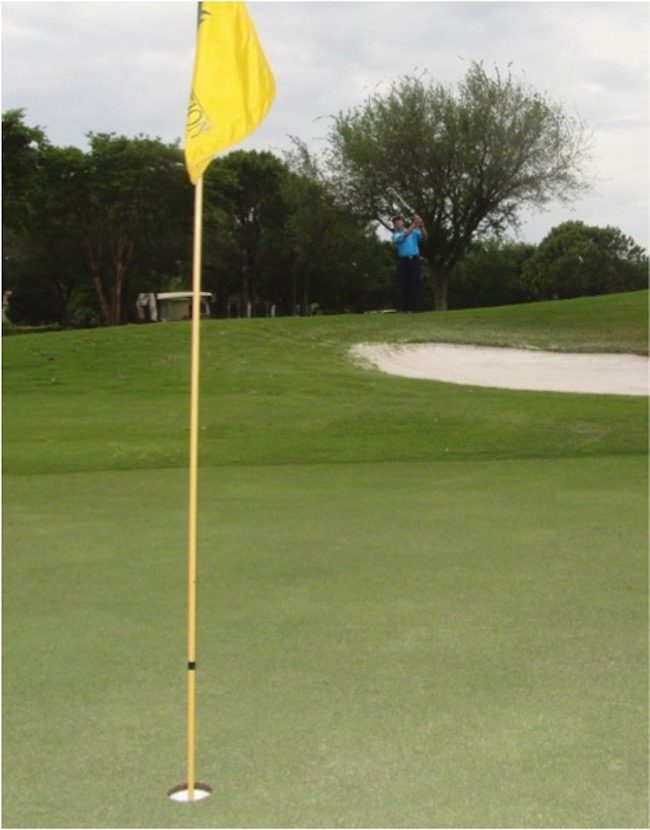
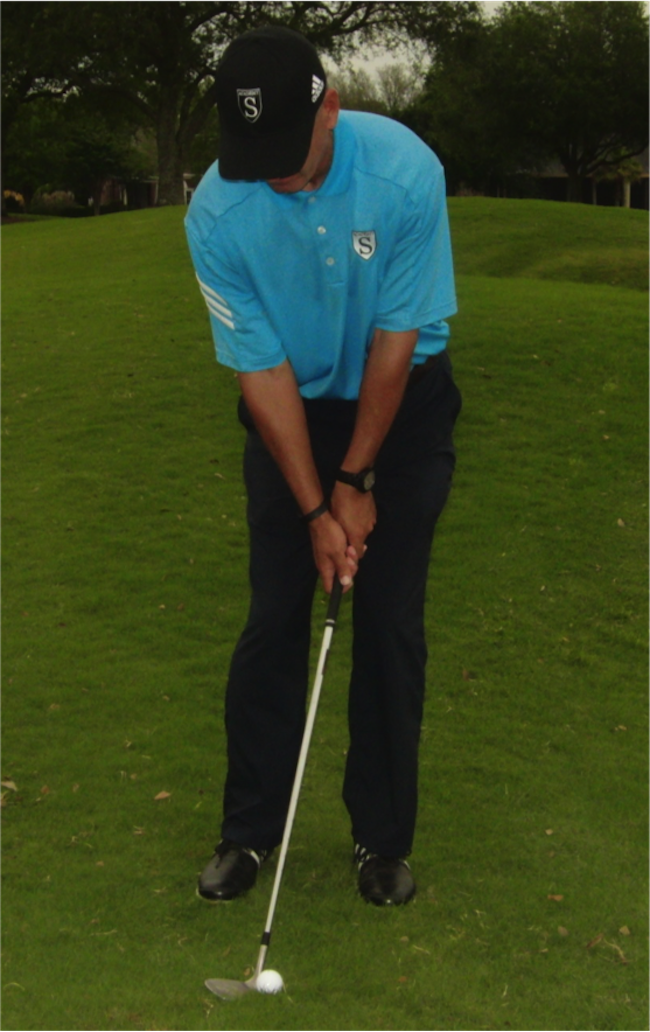
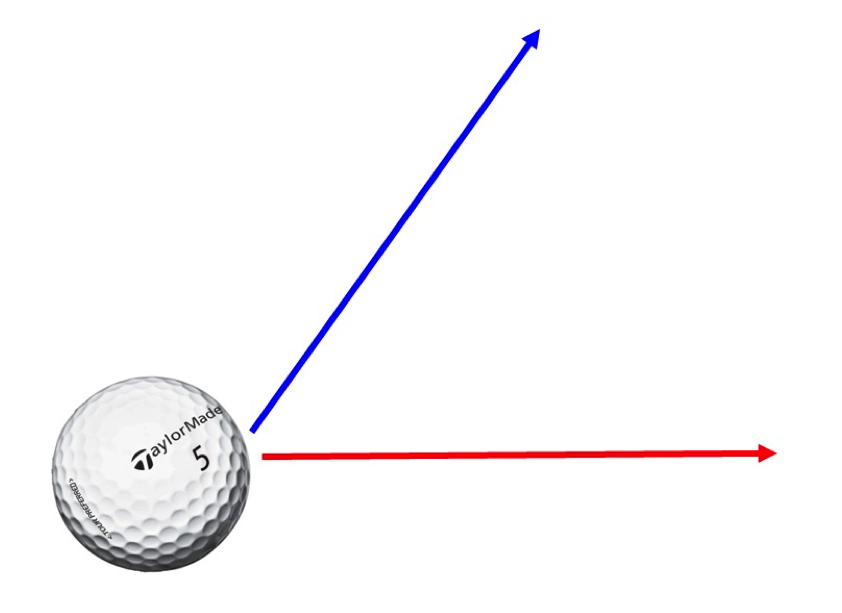
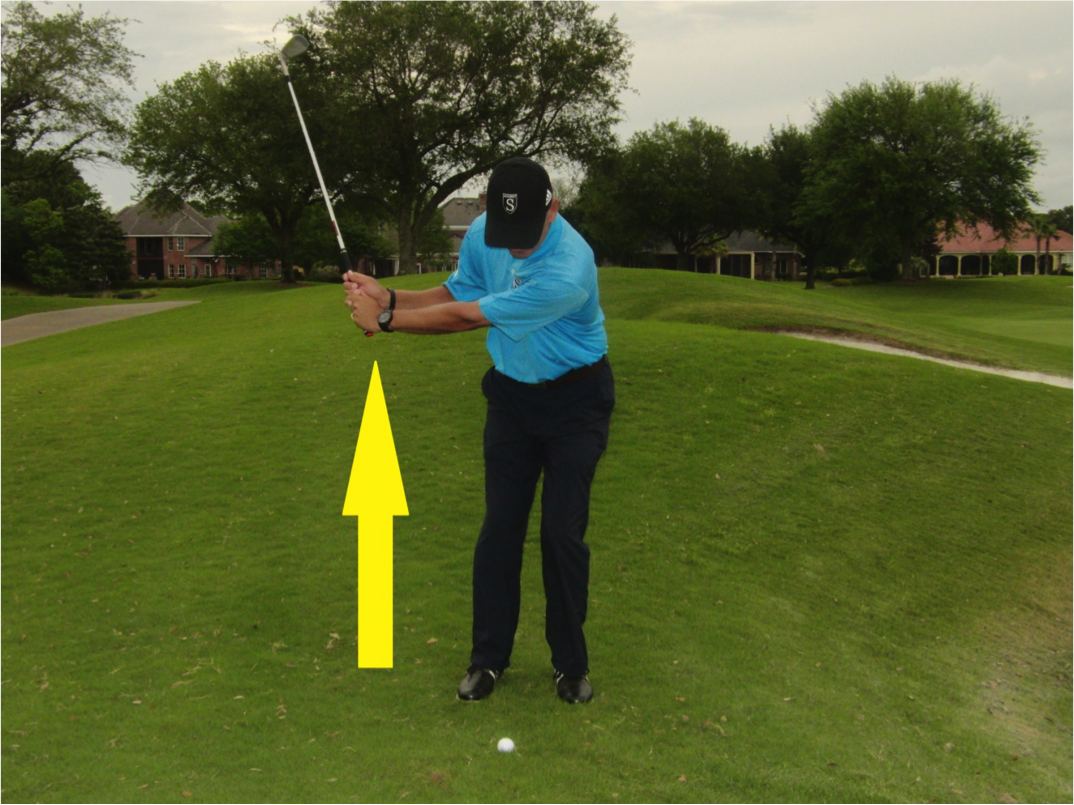
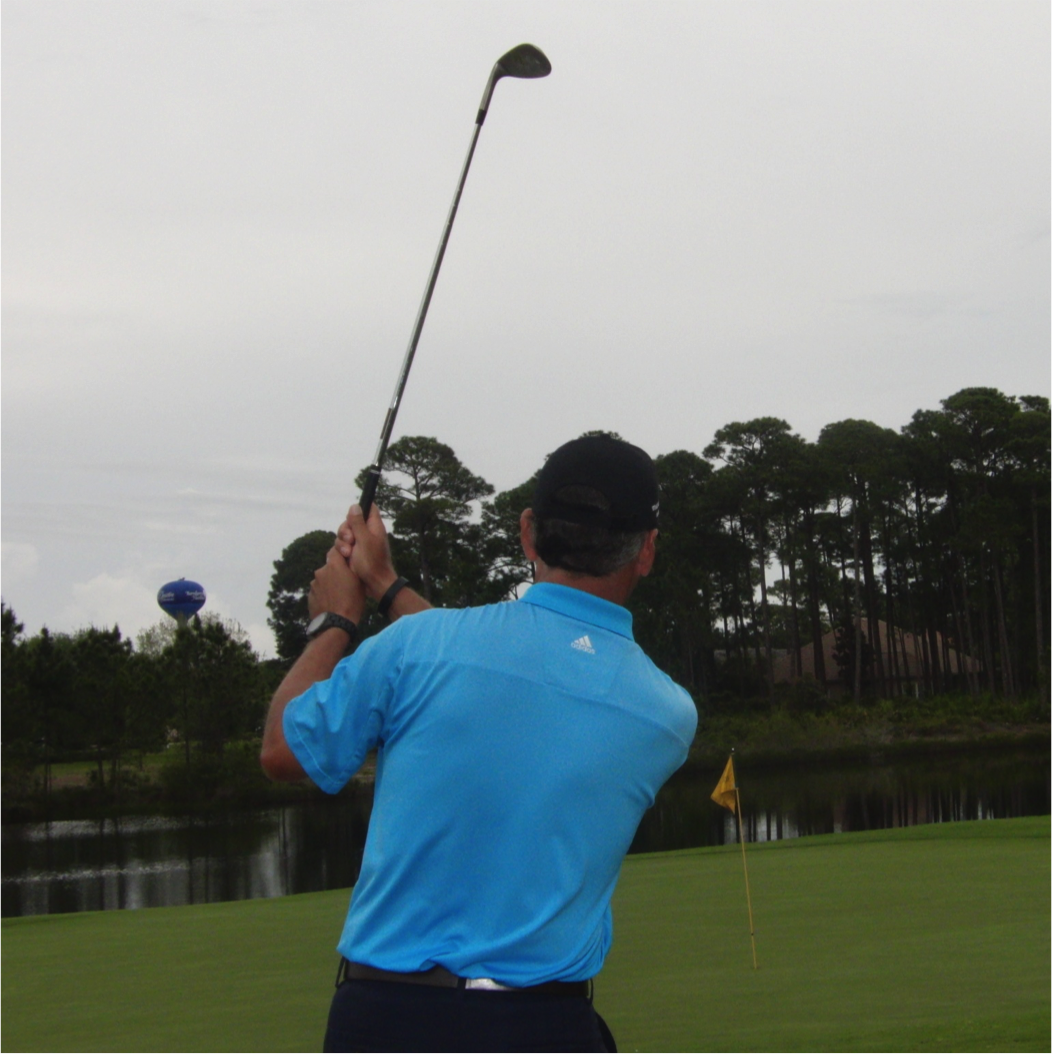

















Jim
Apr 20, 2015 at 12:33 pm
I was right beside Jordan when he hit that shot, and honestly it wasn’t a very difficult shot. Granted it was followed by a great putt, but I think an amateur that has a flop shot could get than within 15 feet 7/10 times. Making the putt probably 3/10, which makes it a great up and down for Spieth. But the actual flop shot admittedly wasn’t as difficult as it probably appeared on television.
Brutus
Apr 20, 2015 at 1:41 pm
Like the author said, make it with all the pressure and patrons literally breathing down your back? 1 in a 25 would be a reasonable number. The shot would be hard enough, then add the pressure putt on and maybe it gets to 1 in 50. Oh, one has to throw in the confidence factor after butchering the last hole with a double bogey too. 1 in 100…
jim
Apr 22, 2015 at 12:34 am
You get used to all that attention, I’m sure. The point is, the shot wasn’t that bad. The elevation was nearly nonexistent, the bunker really wasn’t in the way (Spieth and his caddie were discussing a bump and run in fact, which would be dumb), and the green had almost no undulation where the pin was. Also, the lie was perfect. Jordan even responded to Michael when asked “how is the lie,” and Spieth said “I’ll hit grass first.” I mean, as an amateur, do you ever hit off half grass/dirt lies and feel it’s a good flop position? He was in the perfect lie for a flop, almost a fake lie. Trust me, this was an easy shot. The fame/attention, he was used to already, as you would be as well if you had his fortune.
Earl
Apr 20, 2015 at 12:12 pm
Reminds me of a video I bought from Monte.. All that video made me do was it it fat and tons of shanks. So want my money back from that piece of junk video.infact most of his videos are crap
Rob Strano
Apr 20, 2015 at 7:45 pm
Earl, thanks for your comment…
Regarding your struggles, that is what happens when the club gets behind your hands going back and you lose angle of attack. Be sure you get vertical and the club stays outside your hands in the backswing. That should help you play the safety flop.
Dennis Clark
Apr 17, 2015 at 9:41 am
Another example of how the game has changed. In the 56° wedge era, he makes bogey there.
Alex
Apr 17, 2015 at 11:13 am
In the 56° era only Seve Ballesteros could’ve done that!
moses
Apr 17, 2015 at 12:56 pm
“GET OFF MY LAWN”!!!!!!!!!
Really!!! That’s all you have to say?
TR1PTIK
Apr 20, 2015 at 9:08 am
I’ve hit a couple of decent flops with my 56*, but it’s a very low percentage shot because of the additional bounce. Sometimes you just have to use your imagination and try something a little different. It might work, it might not.
Rob Strano
Apr 20, 2015 at 7:47 pm
I did not get a SW until I was in HS. So I learned to flop the ball with a PW from age 6 through 14! Your bounce needs to be adjusted for your conditions and you need to get your hands down to be sure you slide the flange across the ground not into the ground.
PK
Apr 16, 2015 at 2:46 pm
Just watching Spieth set up for that shot gave me anxiety.